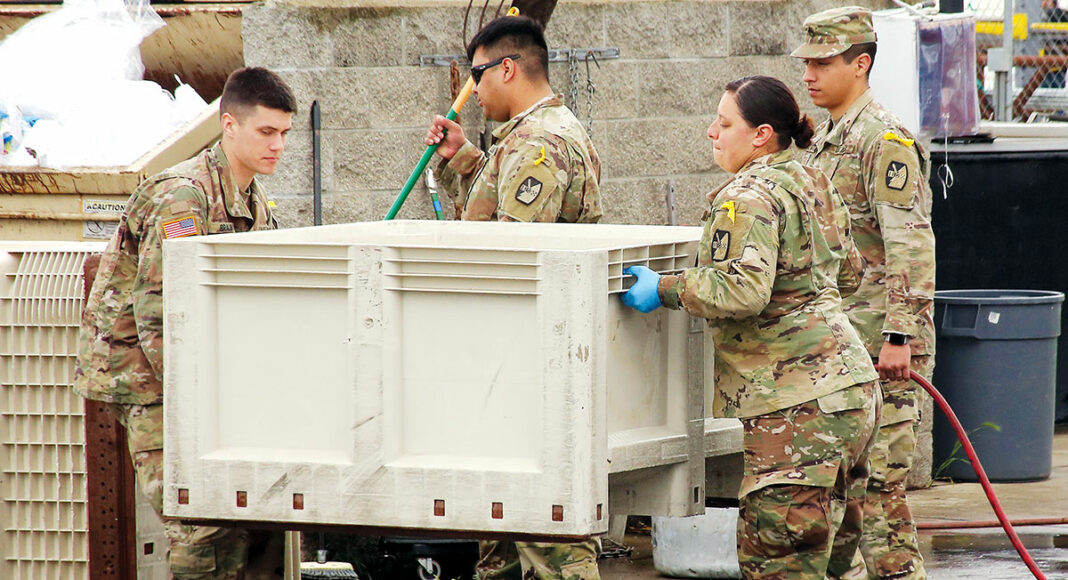MariaElena de la Garza, executive director of the Community Action Board (CAB), says one factor that has made the Covid-19 pandemic especially dangerous has stemmed from messaging missteps that prevented health-related information from getting through cultural and language barriers.
“Early on, we saw a disparity in how information was getting out,” she says.
A month ago, there was a shift in Covid-19 test results. Suddenly, most of the positive cases were popping up in Latino populations, and in South County, which has a larger Latino community.
As a result, community and health leaders have been working on the important challenge of how to better communicate to all residents about the dangers posed by the novel coronavirus that causes Covid-19, says de la Garza, who serves on the pandemic-related Economic Recovery Council.
She says it’s important to create messaging that reflects community and cultural values and to share those messages in a variety of languages—including English and Spanish, but also others. “How do we do it in ways so that more families get the message and get it reinforced, just like we get it in English?” she says.
Santa Cruz County Public Health Officer Dr. Gail Newel has explained that people of color are generally at higher risk of being negatively impacted by many social determinants of health, including cultural and language barriers, lack of health care, limited access to healthy food and poverty.
Among its impacts, the latter can force residents to try to house more people in smaller units.
The largest share of Covid-19 cases have been contracted from someone the patient knows who was already infected. Newel said on June 11 that most of those cases were spread within household units. She said it would be all but impossible for someone to become infected with Covid-19 and not share it with members of their household. (Preventing the spread of Covid-19 through a household unit is a truly difficult task—one that it would take a couple epidemiologists to pull off.) The result is that, if someone comes down with Covid-19, they’re probably going to end up giving it to everyone in their household.
GIVING BACK
Vulnerable populations, like poor and Latino communities, have not just been disproportionately hit by the pandemic. They were also disproportionately hurt by the resulting shutdowns that were targeted at slowing its spread.
At CAB, for instance, de la Garza helps oversee the day worker center, which provides day labor gigs for local workers—many of them dads in their thirties and forties. They’re often heads of households, and often undocumented. In a normal week, the center has anywhere from 50 to 150 job matches in a week. But suddenly in late March, when the shelter-in-place order took effect, the number of job placements went to zero.
CAB had to immediately pivot services to focus on doing food distributions, expanding its rental assistance programs, and handing out personal protective equipment like face masks, face shields and hand sanitizers.
Meanwhile, undocumented immigrants are ineligible for federal benefits, even in a pandemic, although those in California have been granted some assistance.
In general, poverty has been a central discussion point in discussions around recovering from both the pandemic and the recession. As Newel made the decision to reopen more sectors of the economy last month, in line with other counties across the state, she cited her concerns about poverty as a reason to move ahead.
“As I’ve said before, the reality of death by poverty is very much a real thing. People die because they don’t have adequate housing and food and other things that poverty puts them at risk for,” Newel said. “If we don’t have an economy that’s reopened, we will have deaths as a result of that as well. So I have to balance that with my concerns for public health and safety.”
WAGE AGAINST
Though cases in Santa Cruz County have remained relatively low compared to other communities around the state, Watsonville and its large Latino community—80% of the population in the county’s southernmost city—has been hit the hardest during the Covid-19 pandemic.
As of Monday, there were 181 known active cases in the county, and there have 459 cases overall since March. More than half of the county’s total overall cases have been identified in the Watsonville area. Latino residents make up 51.9% of the county’s cases despite being only 33.5% of the county’s population. At the state level, Latino residents account for roughly 56% of Covid-19 cases despite being only 38.9% of California’s population.
In the June 11 press conference, Deputy County Health Officer David Ghilarducci said the county’s residents of color have taken the brunt of the pandemic because many work in industries that were deemed essential by county and state orders, such as grocery stores, gas stations and hardware stores.
Watsonville City Councilman Felipe Hernandez says that the city of Watsonville’s economic profile, combined with the low wages and minimal benefits that are found in many of those industries, have created a dangerous landscape for Watsonville’s workers. While some industries closed their offices and moved online, many in Watsonville continued reporting to work despite health concerns because they had to pay bills.
“Everywhere you’re most likely to get infected with Covid, [Latino residents] are there,” Hernandez says. “Unfortunately, they’re there for 8-12 hours every day for low wages, no paid sick days, no health care, no option to work from home. There is an underlying issue and it’s being illustrated right now.”













